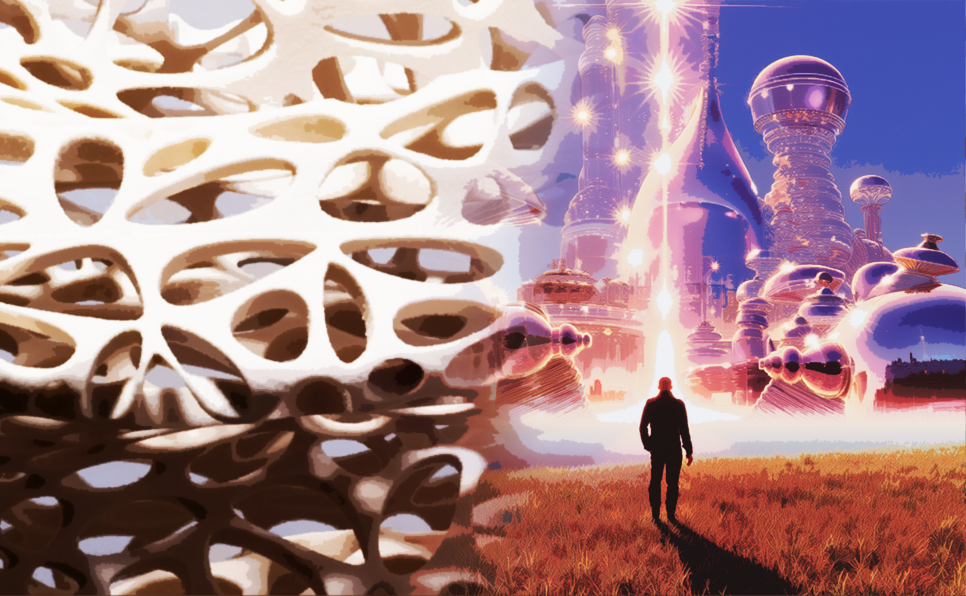Now we live in a world that is dominated by technology at a very fast pace. Architecture, however, has not progressed much. I definitely see that we have very beautiful designs and wonderful architects are working now. But the architectural language has been the same until now. Using familiar materials and beams and columns. Imagine a future where buildings are no longer static and inanimate structures, but behave like living beings. They breathe, interact with their environment. Or you can say an architecture that is “with” nature and not “for” nature.
The concept of material ecology has created exciting possibilities for designers to mimic and engage with natural processes. From facades that respond to changing weather conditions to walls that purify the air. This is a small part of it. Other interesting categories are self-healing materials that can be used in buildings to act like a living ecosystem.
In this article, I try to address this kind of intersection of science, technology and design. What is the role of computing systems in this matter? What about artificial intelligence? And finally, how can combining nature and technology change the way we think about architecture, sustainability and our relationship with the environment?
What is Material Ecology?
Material ecology is an emerging field at the intersection of biology, technology, and design. Where natural systems and living organisms inspire design. Here we seek to go beyond traditional building materials by exploring bio-based systems that are self-sustaining, adaptive and able to respond to environmental changes. Just like a living thing.
In this way, we can move design from a human-centered practice to a more ecological and symbiotic practice with nature. Where buildings, materials and nature work together to increase sustainability and reduce the environmental footprint of construction.
In the field of architecture, material ecology combines living materials such as mycelium, algae and bacteria in the design process. These living organisms are capable of growth, regeneration and even self-healing, which creates a fundamental change from traditional approaches. For example, mycelium (the root structure of fungi) could be used as a biodegradable alternative to plastic or insulation, while algae-based bricks might absorb CO2 and provide energy. Imagine buildings that can manage their energy consumption.
Materials ecology also embraces the idea of biocomputing, where living organisms and digital technologies are integrated to create intelligent systems capable of responding to input data. These systems can sense environmental changes, optimize energy consumption, or even repair themselves in case of damage, turning buildings into dynamic and responsive beings that are more in tune with their natural environment.
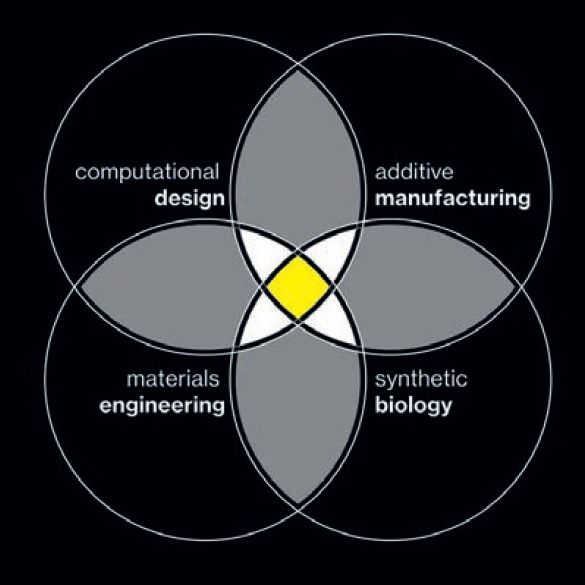
Well, let’s know a little more about biocomputing.
Biocomputational architecture uses biological principles and processes along with computational algorithms to design and develop adaptive and intelligent structures. Unlike conventional designs that rely on a static and fixed state, biocomputing makes structures dynamically respond to their surroundings.
The basis of biocomputing lies in mimicking the behavior of living systems. By studying biological algorithms such as how plants grow toward sunlight or how fungal networks optimize nutrient transport architects can create designs that use machine learning to adapt to real-time environmental data. This approach allows for buildings that not only look natural, but behave like natural beings and interact with their environment in meaningful ways.
The role of artificial intelligence
By using artificial intelligence, we can collect and analyze biological data so that our computer systems can learn from their environment. These systems can adapt to new data and allow our design. For example, a facade system based on artificial intelligence can learn the daily habits of the building’s residents and automatically adjust the conditions of ventilation, shade and lighting inside the house. Or you can use these systems in heating and cooling buildings.
Finally, material ecology envisions a future in which nature and technology converge to create structures that are not only sustainable, but also alive and able to evolve with time. It’s a powerful reimagining of how we design and build, pushing the boundaries of what’s possible in the world of architecture. Through material ecology, we move closer to an age of architecture where buildings don’t just coexist with nature, but become part of it.
INC: Interface for Nature and Computer
The concept of INC changes the way we understand the relationship between the digital world and nature. Normally we think of computers as controlled and artificial tools that have nothing to do with the natural world outside of them. But advances in sensors, algorithms and computing power allow us to have a user interface between nature and computers.
To truly bring INC to life, a collaborative approach is essential. It requires expertise in a wide range of areas:
- Designers: Designers should use these materials in their designs and create a new way to create spaces and products.
- Biologists and ecologists: They should work on the development of living materials that are the core of INC.
- Engineers: They are the design department of new computers. Computers that allow materials to interact with data from their environment.
- Urban planners and policy makers: must consider how to scale these technologies in the built environment and ensure that they fit into the necessary and existing infrastructure.
Innovative Projects and Case Studies
The Silk Pavilion: Mediated Matter Group | MIT
Designed by the Mediated Matter Group at MIT, led by Professor Neri Oxman, the Silk Pavilion is a groundbreaking experiment in biocomputational architecture. The project explores how biological organisms, in this case silkworms, can be integrated into the design process, blurring the lines between natural and built environments.
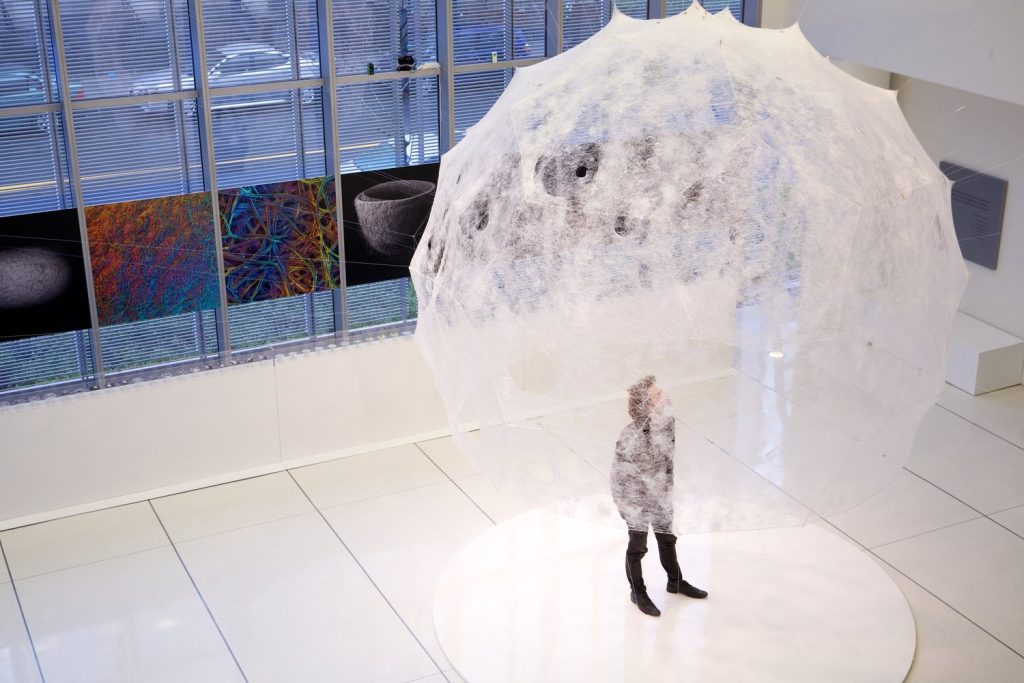
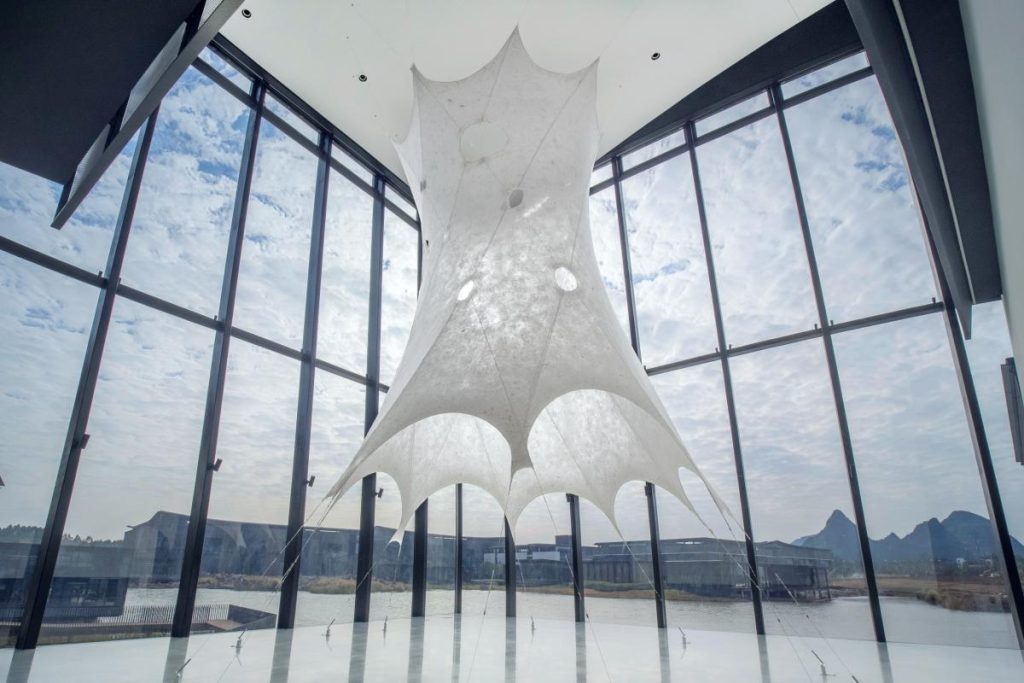
Mycelium Bricks: The Living, New York City
The innovative use of mycelium, the root structure of fungi, as a building material has been explored by architecture firm The Living in their project, the Hy-Fi Tower in New York City. This project shows how biocomputing and bio-fabrication can be used to create sustainable and biodegradable structures.
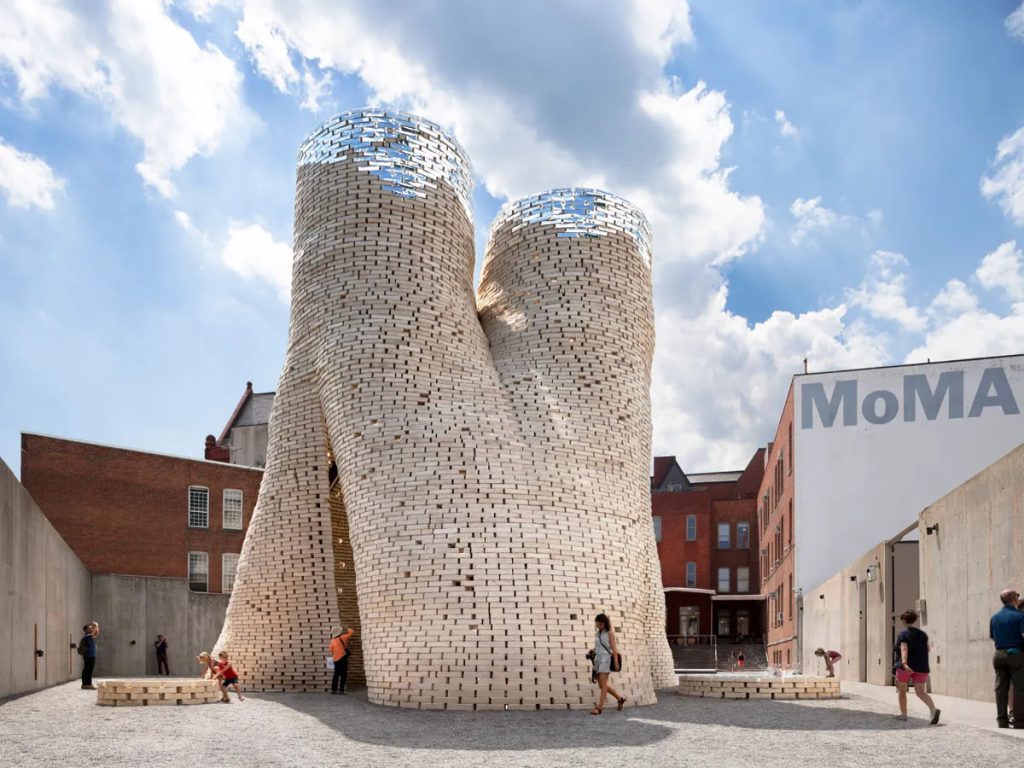
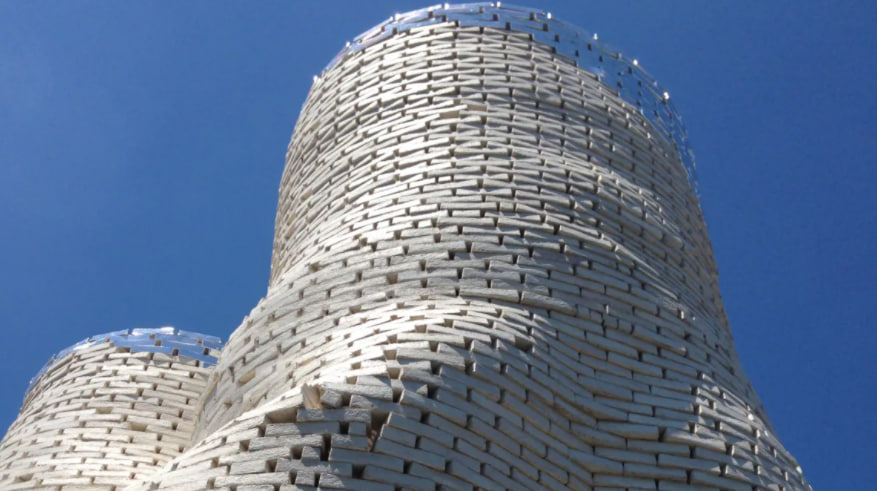
Challenges
One of the most important challenges in material ecology is the scalability of manufacturing processes. Unlike traditional building materials such as concrete or steel, which can be produced on an industrial scale with established methods, bioengineered materials are largely experimental.To solve the problem of scalability, we must find ways to automate the process of making these materials. But this work requires a lot of investment and this is another challenge.
The Future
This is a bold vision. But it is not impossible. As man has been able to move the boundaries of science so far. We are on the verge of a new future. In this future, the boundaries between different sciences will be removed.
It is something more than a technological revolution. This is an intellectual transformation. A new view of the world we live in.
